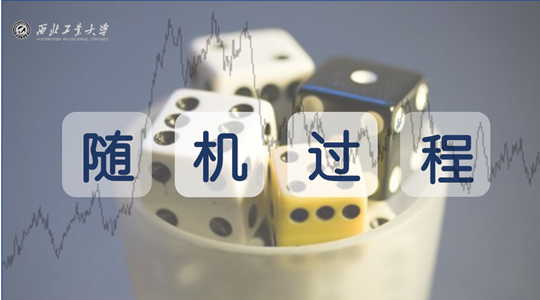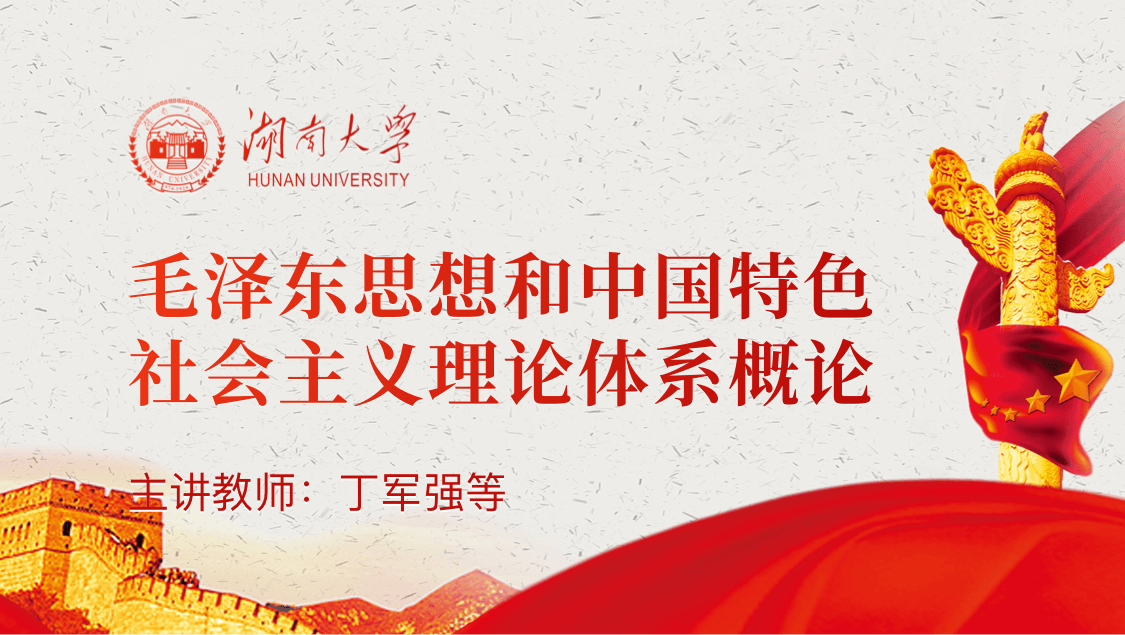
当前课程知识点:Five Disciplines of Management Quality and Ability —— Follow Me to Learn Management > The First Discipline: Situation Judgement, Scientific Decision-making > 1.4 Strategic Decision Analysis Tools: SWOT Analysis and BCG Matrix > 1.4 Strategic Decision Analysis Tools: SWOT Analysis and BCG Matrix
返回《Five Disciplines of Management Quality and Ability —— Follow Me to Learn Management》慕课在线视频课程列表
返回《Five Disciplines of Management Quality and Ability —— Follow Me to Learn Management》慕课在线视频列表
大家好
在进入这次课之前
让我们先来 想一想
老张公司最近聘请了一家管理咨询公司
管理咨询公司在对他所在的公司进行诊断之后
给出了咨询意见
你们公司现在业务量很大
产品也有竞争力
这是你们的优势
目前行业环境也不错
建议你们采取SO战略
关于你们公司的业务板块
现金牛业务正在逐渐地变成瘦狗业务
问号业务的储备太少
老张听的是一头雾水
一点也听不懂
请大家思考一下
你能够给老张更具体介绍一下什么是SO战略
现金牛业务 瘦狗业务 问题业务
又是什么
请带着你的思考
我们一起来聊一聊
战略决策分析的两个常用的工具
SWOT分析 和 BCG矩阵
从战略层面而言
公司的发展是需要回答两个问题的
第一 公司的总体战略思路
第二 公司业务 或产品 的发展重点
SWOT分析 也称为SWOT分析
是确定公司总体战略思路的常用工具
所谓SWOT分析
就是在对企业内部优势和劣势
以及外部环境的机会和威胁
进行综合分析的基础上
确定公司的发展战略
SWOT分析主要有两个步骤
第一步 分析公司内部的优势和劣势
以及外部的机会和威胁
内部的优势和劣势的分析
就是与竞争对手去比
我们有哪些优势
同时我们有哪些劣势
是优势大于劣势
还是劣势大于优势
外部环境的机会和威胁的分析
就是要去分析外部环境里面有哪些机会
又有哪些威胁
是机会大于威胁
还是威胁大于机会
第二步 我们要在这两个方面分析基础上
优势与劣势
机会与威胁相互的组合
形成SO ST WO和WT策略
并且明确我们公司的具体战略思路
SO战略就是依靠公司内部的优势
并充分利用外部机会的一种 增长型 的战略
如果一家公司它目前所处的环境
是优势大于劣势
机会也大于威胁
那么我们就应该选择SO的战略
WO战略是充分利用外部环境的机会
克服我们公司内部劣势的
一种 扭转型 的战略
如果一家公司它目前所处的外部环境
机会很多
但是公司内部在资源在一些能力方面相对不足
劣势是大于优势
那么我们就应该实施WO战略
ST战略是依靠公司内部的优势
回避外部威胁的一种 多元化 的战略
如果一家公司目前所处的环境是威胁大于机会
但是我们公司内部
资源的与能力的一些优势是大于我的劣势的
那么我们就应该实施ST战略
WT战略是减少我们内部的劣势
回避外部威胁
是一种 防御型 的战略
如果一家公司目前所处的环境有很多的威胁
并且我自身也存在很多劣势
那么我们就应该实施一种WT的战略
一个组织要达成某个目标
除了确定总体战略思路之外
我们还必须进一步去明确
我们公司业务 或着产品 的发展重点
BCG矩阵
可以帮助我们来解决这个问题
波士顿矩阵
又称为 经营单位组合分析法
是波士顿管理咨询公司
所提出来的一种工具
波士顿矩阵
根据 业务前景 和公司 竞争实力
两个维度
把公司的业务相应分为4种
现金牛业务
明星业务
问号业务和瘦狗业务四种
现金牛业务是公司目前现金流的主要来源
通常也被大家称为印钞机
对于这种业务
由于他的市场已经趋于饱和
市场前景并不好
因此我们维持目前的投入就可以了
不必继续加大投入
应该实施的是一种 维持 型的战略
明星业务
是指销售增长率和市场占有率都高的
都高的这种业务
明星业务通常有着很好的市场前景
并且目前公司也占据了相对较高的市场份额
对于这种业务
公司应该继续加大投入
我们应该随着行业的不断发展
持续去做大自己的规模
持续去保持公司有利的竞争地位
这一种业务
虽然公司目前有一定的竞争实力
但是由于我们需要不断地进行大量的投入
因此目前而言总体上可能并不赚钱
但是它代表着公司业务发展的方向
一旦明星业务变成了现金牛业务
那么公司就进入了下一个爆发期
因此我们对于这一种业务
应该采取 增长 型的战略
问号业务
问号业务是指的销售增长率高
市场占有率低的业务
这种业务目前公司相对市场份额还不是很高
但是整个行业的增长率很快
我们之所以称之为叫问号业务
是因为它最终能否做大
存在着一定的不确定性
我们对于这种业务
应该采取的是一种 选择 型的战略
也就是说如果这种业务有可能做大
我们就 加大 投入
如果这种业务没有可能做大
我们应该尽快地 放弃 掉
瘦狗业务是指的
销售增长率和市场占有率双低的这种经营业务
那么对于这种业务
公司应尽可能的快速地去收割短期的利益
要果断地去清理 撤销 或者出售
把资源用在其他有前景的业务上
所以对于这种业务
我们应该采取的是一种采用 放弃 型的战略
在现实管理工作过程中
我们经常说一个企业的业务发展必须要有四代业务
生产一代
研发一代
淘汰一代
储备一代
生产一代 就是我们这里所讲的 现金牛业务
储备一代 就是我们这里讲的 明星业务
研发一代 就是我们这里讲的 问号业务
淘汰一代 就是我们这里所讲的 瘦狗业务
任何一个企业必须要有这四代业务
你才有可能进入到生生不息的良性循环中
现在让我们回到课程开始前的 想一想
你能够给老张更具体介绍一下
什么是SO战略
现金牛业务 瘦狗业务 问号业务又是什么
第一
老张公司现在业务量很大
产品也有竞争力
这是他们公司的优势
目前行业环境也不错
这是公司外部环境的一些机会
因此公司总体战略应该是采取SO战略
也就是依靠公司内部的优势
并且利用外部机会的一种增长型战略
第二
老张公司的现金牛业务
现在逐渐在变成瘦狗业务
应该采取收割战略
问号的业务储备太少了
未来明星业务的增长乏力
这样很难保证未来公司的现金牛业务
因此应该快新业务的拓展
也就是发展问号业务
学以致用
在这次课程结束之前
我给大家留下一个思考题
请大家 用一用
我有一次到一家公司做管理咨询
公司一个部门负责人跟我说
他所在的这个部门所负责的产品
尽管目前整个行业的前景已进入到饱和期
但是他们的产品目前在行业内的市场份额最高
也是公司目前主要的利润来源
但是公司的老板
最近并不重视对这个产品的投入
A经理他有点想不通
如果公司还不往这个产品投钱
公司的利润来源肯定会受到影响
我们请大家思考一下
你认为这个部门经理的想法对不对 为什么
关于思考题的答案
我们会在课程的互动讨论区与大家一起来讨论
并给出我们的观点
好这次课就到这里
下次课见
-0.1 What is Management: The Secret of Management is to Borrow Resources
--0.1 What is Management: The Secret of Management is to Borrow Resources
--0.1 What is Management: The Secret of Management is to Borrow Resources
--0.1 What is Management: The Secret of Management is to Borrow Resources
-0.2 Natural Attribute and Social Attribute of Management
--0.2 Natural Attribute and Social Attribute of Management
--0.2 Natural Attribute and Social Attribute of Management
--0.2 Natural Attribute and Social Attribute of Management
-0.3 The Scientificity and Artistry of Management
--0.3 The Scientificity and Artistry of Management
--0.3 The Scientificity and Artistry of Management
--0.3 The Scientificity and Artistry of Management
-0.4 Management Functions, Skills and Roles
--0.4 Management Functions, Skills and Roles
--0.4 Management Functions, Skills and Roles
--0.4 Management Functions, Skills and Roles
-0.5 Case Study: Personal Excellence Doesn’t Mean Much
--0.5 Case Study: Personal Excellence Doesn’t Mean Much
--0.5 Case Study: Personal Excellence Doesn’t Mean Much
--0.5 Case Study: Personal Excellence Doesn’t Mean Much
-0.6 Centennial Management Context (Ⅰ)
--0.6 Centennial Management Context (Ⅰ)
--0.6 Centennial Management Context (Ⅰ)
--0.6 Centennial Management Context (Ⅰ)
-0.7 Centennial Management Context (Ⅱ)
--0.7 Centennial Management Context (Ⅱ)
--0.7 Centennial Management Context (Ⅱ)
--0.7 Centennial Management Context (Ⅱ)
-0.8 Case Study: Management Enlightenment of Journey to the West Team
--0.8 Case Study: Management Enlightenment of Journey to the West Team
--0.8 Case Study: Management Enlightenment of Journey to the West Team
--0.8 Case Study: Management Enlightenment of Journey to the West Team
-Course Introduction Unit Test
-1.1 Insight into the General Trend of the Environment (Ⅰ): PEST Method
--1.1 Insight into the General Trend of the Environment (Ⅰ): PEST Method
--1.1 Insight into the General Trend of the Environment (Ⅰ): PEST Method
--1.1 Insight into the General Trend of the Environment (Ⅰ): PEST Method
-1.2 Insight into the General trend of the Environment (Ⅱ): Porter’s Five Forces Model
--1.2 Insight into the General trend of the Environment (Ⅱ): Porter’s Five Forces Model
--1.2 Insight into the General trend of the Environment (Ⅱ): Porter’s Five Forces Model
--1.2 Insight into the General trend of the Environment (Ⅱ): Porter’s Five Forces Model
-1.3 Case Study: How McDonald’s Entered Chinese Market
--1.3 Case Study: How McDonald’s Entered Chinese Market
--1.3 Case Study: How McDonald’s Entered Chinese Market
--1.3 Case Study: How McDonald’s Entered Chinese Market
-1.4 Strategic Decision Analysis Tools: SWOT Analysis and BCG Matrix
--1.4 Strategic Decision Analysis Tools: SWOT Analysis and BCG Matrix
--1.4 Strategic Decision Analysis Tools: SWOT Analysis and BCG Matrix
--1.4 Strategic Decision Analysis Tools: SWOT Analysis and BCG Matrix
-1.5 Group Decision-making Tools and Methods: Delphi Method and Brainstorming Method
--1.5 Group Decision-making Tools and Methods: Delphi Method and Brainstorming Method
--1.5 Group Decision-making Tools and Methods: Delphi Method and Brainstorming Method
--1.5 Group Decision-making Tools and Methods: Delphi Method and Brainstorming Method
-The First Unit Test
-2.1 Attitude Determines Everything
--2.1 Attitude Determines Everything
--2.1 Attitude Determines Everything
--2.1 Attitude Determines Everything
-2.2 The Components and Formation of Attitude
--2.2 The Components and Formation of Attitude
--2.2 The Components and Formation of Attitude
--2.2 The Components and Formation of Attitude
-2.3 How to Change the Attitude of Employees
--2.3 How to Change the Attitude of Employees
--2.3 How to Change the Attitude of Employees
--2.3 How to Change the Attitude of Employees
-2.4 Responsibility and Efficient Execution
--2.4 Responsibility and Efficient Execution
--2.4 Responsibility and Efficient Execution
--2.4 Responsibility and Efficient Execution
-2.5 Ethics and Core Values
-The Second Unit Test
-3.1 Basic Issues in Organization
--3.1 Basic Issues in Organization
--3.1 Basic Issues in Organization
--3.1 Basic Issues in Organization
-3.2 How to Establish an Effective Organizational Structure (Ⅰ)
--3.2 How to Establish an Effective Organizational Structure (Ⅰ)
--3.2 How to Establish an Effective Organizational Structure (Ⅰ)
--3.2 How to Establish an Effective Organizational Structure (Ⅰ)
-3.3 How to Establish an Effective Organizational Structure (Ⅱ)
--3.3 How to Establish an Effective Organizational Structure (Ⅱ)
--3.3 How to Establish an Effective Organizational Structure (Ⅱ)
--3.3 How to Establish an Effective Organizational Structure (Ⅱ)
-3.4 Case Study: The Responsibility of the Sales Department
--3.4 Case Study: The Responsibility of the Sales Department
--3.4 Case Study: The Responsibility of the Sales Department
--3.4 Case Study: The Responsibility of the Sales Department
-3.5 Effective Communication Skills
--3.5 Effective Communication Skills
--3.5 Effective Communication Skills
--3.5 Effective Communication Skills
-3.6 Organizational Cultural Function and Content
--3.6 Organizational Cultural Function and Content
--3.6 Organizational Cultural Function and Content
--3.6 Organizational Cultural Function and Content
-3.7 Case Study: Resignation (Ⅰ)
--3.7 Case Study: Resignation (Ⅰ)
--3.7 Case Study: Resignation (Ⅰ)
--3.7 Case Study: Resignation (Ⅰ)
-3.8 Case Study: Resignation (Ⅱ)
--3.8 Case Study: Resignation (Ⅱ)
--3.8 Case Study: Resignation (Ⅱ)
--3.8 Case Study: Resignation (Ⅱ)
-The Third Discipline Unit Test
-4.1 How to Recruit Good Staff
--4.1 How to Recruit Good Staff
--4.1 How to Recruit Good Staff
--4.1 How to Recruit Good Staff
-4.2 Motivate Employees’ Work Potential
--4.2 Motivate Employees’ Work Potential
--4.2 Motivate Employees’ Work Potential
--4.2 Motivate Employees’ Work Potential
-4.3 Content-based Incentive Theory (Ⅰ): Hierarchical Theory and ERG theory
--4.3 Content-based Incentive Theory (Ⅰ): Hierarchical Theory and ERG theory
--4.3 Content-based Incentive Theory (Ⅰ): Hierarchical Theory and ERG theory
--4.3 Content-based Incentive Theory (Ⅰ): Hierarchical Theory and ERG theory
-4.4 Content-based Incentive Theory (Ⅱ): Motivator-Hygiene Theory
--4.4 Content-based Incentive Theory (Ⅱ): Motivator-Hygiene Theory
--4.4 Content-based Incentive Theory (Ⅱ): Motivator-Hygiene Theory
--4.4 Content-based Incentive Theory (Ⅱ): Motivator-Hygiene Theory
-4.5 Process-based Incentive theory: Expectation Theory and Fairness Theory
--4.5 Process-based Incentive theory: Expectation Theory and Fairness Theory
--4.5 Process-based Incentive theory: Expectation Theory and Fairness Theory
--4.5 Process-based Incentive theory: Expectation Theory and Fairness Theory
-4.6 Behavioral Transformation Incentive Theory: Reinforcement Theory
--4.6 Behavioral Transformation Incentive Theory: Reinforcement Theory
--4.6 Behavioral Transformation Incentive Theory: Reinforcement Theory
--4.6 Behavioral Transformation Incentive Theory: Reinforcement Theory
-The Fourth Unit Test
-5.1 The Essence and Tasks of Effective Leaders
--5.1 The Essence and Tasks of Effective Leaders
--5.1 The Essence and Tasks of Effective Leaders
--5.1 The Essence and Tasks of Effective Leaders
-5.2 Trait Theory of Leadership
--5.2 Trait Theory of Leadership
--5.2 Trait Theory of Leadership
--5.2 Trait Theory of Leadership
-5.3 Leadership Behavior Theory
--5.3 Leadership Behavior Theory
--5.3 Leadership Behavior Theory
--5.3 Leadership Behavior Theory
-5.4 Leadership Situation Theory
--5.4 Leadership Situation Theory
--5.4 Leadership Situation Theory
--5.4 Leadership Situation Theory
-5.5 Innovation and Entrepreneurship
--5.5 Innovation and Entrepreneurship
--5.5 Innovation and Entrepreneurship
--5.5 Innovation and Entrepreneurship
-5.6 Two New Trends of Innovation
--5.6 Two New Trends of Innovation
--5.6 Two New Trends of Innovation
--5.6 Two New Trends of Innovation
-The Fifth Unit Test
-Final Exam



